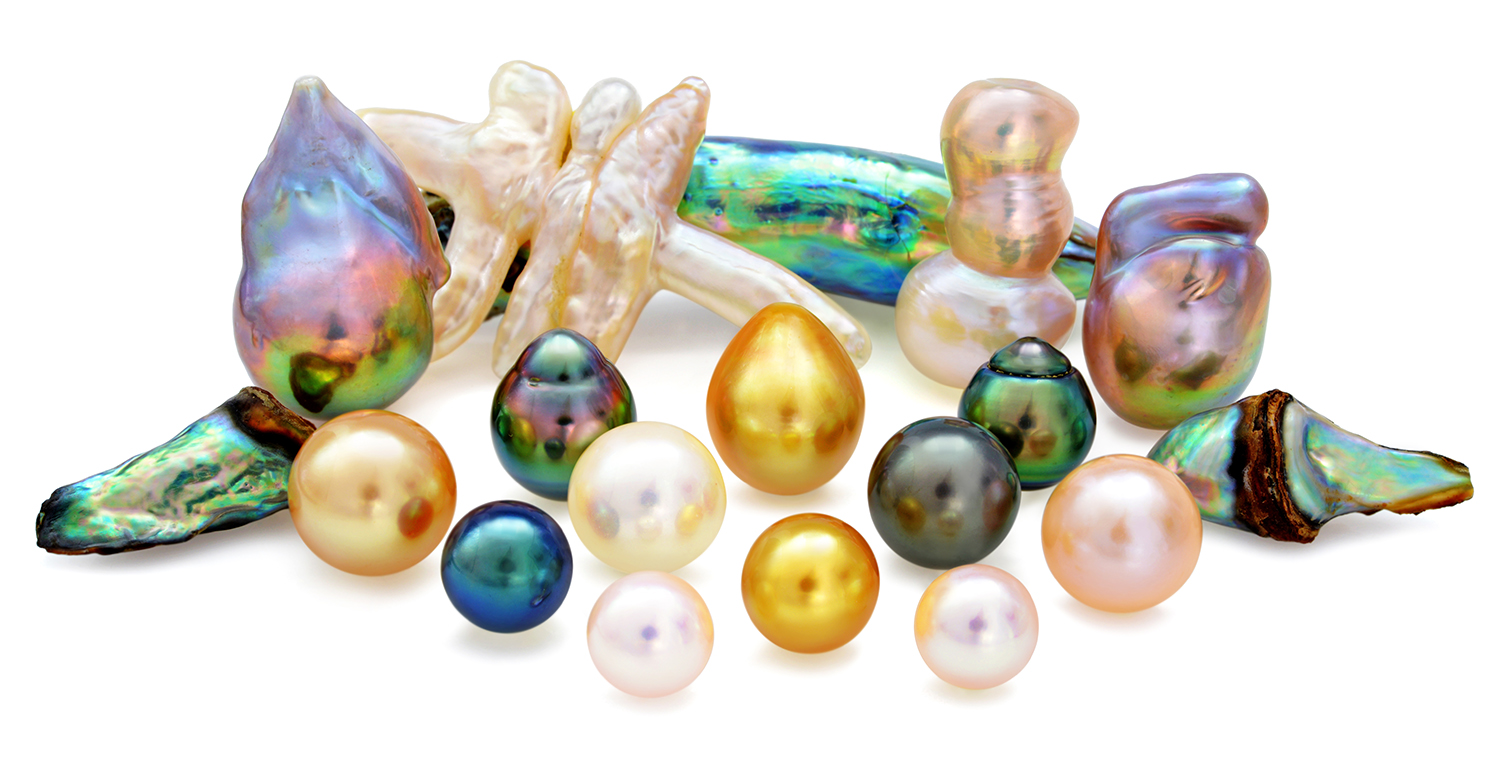For millennia pearls have been associated with royalty, glamour and status, and treasured for their exquisite beauty. Their symmetry and pristine colors were attributes so unusual in the natural world as to suggest the concept of spiritual perfection.

Unlike gemstones or precious metals that must be mined from the earth, pearls are born from oysters complete with a shimmering iridescence, luster and soft inner glow. How something so wondrous emerges from a shell is one of nature's loveliest surprises yet it is only an oyster's way of protecting itself.
A natural pearl begins its life as a foreign object such as a parasite or a piece of shell that accidentally lodges itself into the oyster's soft inner body where it cannot be expelled. To ease this irritant, the oyster takes defensive action and begins to secrete a smooth, hard and crystalline substance around the irritant in order to protect itself. This substance is called "nacre." It is composed of microscopic crystals of calcium carbonate, aligned perfectly with one another so that light passing along the axis of one crystal is reflected and refracted by another to produce a rainbow of light and color. As long as the irritant remains within its body, the oyster will continue to secrete nacre around it - layer upon layer. Over time, the irritant will be completely encased by the silky crystalline coatings. And the result ultimately, is a lovely and lustrous gem known as a pearl.
The most valuable pearls occur spontaneously in the wild, but they are extremely rare. These wild pearls are referred to as natural pearls. Even assuming the possible discoveries of more natural pearls, their extremely limited supply could never be enough to supply the demand.
In effort to mimic nature and to satisfy the shortfall, pearl farmers have been able to modify the natural pearl formation process in order to initiate and control pearl growth. And despite the common misperception, Mikimoto did not discover the process of pearl culture. The earliest evidence of pearl cultivation came from China where the production of mabe type pearls was evident and common place in the 13th century.
The term cultured pearls is often misunderstood or misused, but the meaning is actually rather simple. A cultured pearl is any pearl product where man begins the pearl growth process. Cultured pearls share the same properties as natural pearls and the only difference is that people initiate the growth process rather than leaving it to chance.
Cultured pearls from pearl oysters and freshwater mussels make up the majority of those that are currently on the market today and can be divided into two groups. Beaded cultured pearls, including Akoya, South Sea and Tahitian, and the non-beaded freshwater cultured pearls, like the Biwa or the Chinese pearls. They are additionally categorized by their growth domain and whether they are grown in saltwater or freshwater.
All trademarks and logos shown herein are the property of their respective owners. © Copyright Multicolour Gems Ltd, 1998-2001. All rights reserved. Use of this site constitutes acceptance of Multicolour Return Policy, Privacy Policy and Trading Guarantee. Multicolour.com headquarters at # 59 Soi Pradit, Silom Soi 20, Bangkok, 10500, Kingdom of Thailand, Tel: +66 2 233-2108, Fax: +66 2 236-5274, E-mail to info@multicolour.com. Lost? Check Site Map. Site design and maintenance by NetComposite ®.
|